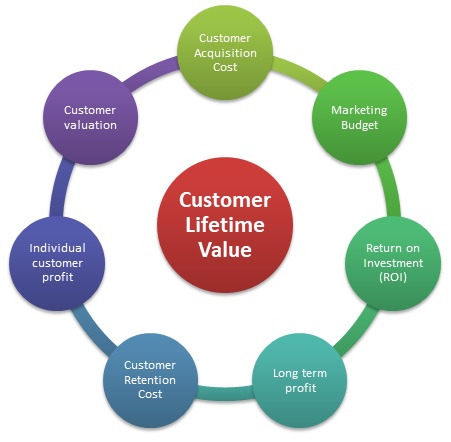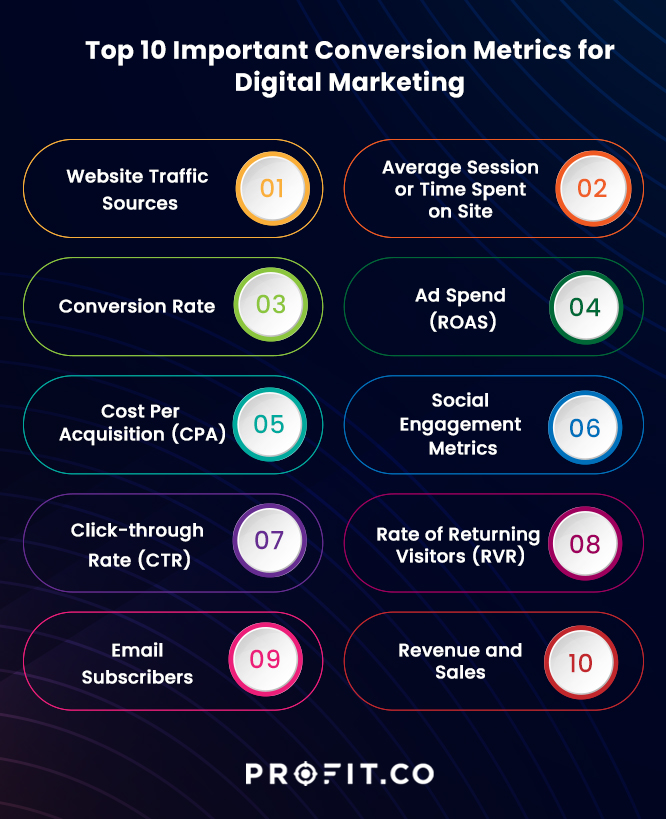Why Data-Driven Decision Making is Crucial for Startups
When it comes to driving growth and success in startups, data-driven decision making is essential. By leveraging data and analytics, startups can make informed decisions that are grounded in objective measurement and analysis, rather than relying on intuition or guesswork. This approach enables startups to optimize their operations, improve customer engagement, and ultimately drive revenue growth.
One of the key benefits of data-driven decision making is that it allows startups to measure the effectiveness of their strategies and tactics. By tracking key performance indicators (KPIs) such as customer acquisition cost, retention rate, and revenue growth, startups can identify areas for improvement and make data-driven decisions to optimize their growth. This approach also enables startups to identify trends and patterns in customer behavior, which can inform product development and marketing strategies.
Furthermore, data-driven decision making helps startups to avoid common pitfalls such as relying too heavily on vanity metrics. By focusing on metrics that truly matter, such as customer lifetime value (CLV) and return on ad spend (ROAS), startups can ensure that their growth strategies are aligned with their business goals. Additionally, data-driven decision making enables startups to stay agile and adapt to changing market conditions, which is critical in today’s fast-paced business environment.
In order to implement data-driven decision making, startups need to have the right tools and infrastructure in place. This includes investing in analytics platforms such as Google Analytics, as well as developing a data-driven culture within the organization. By prioritizing data-driven decision making, startups can set themselves up for long-term success and drive growth through informed, strategic decision making.
By incorporating data-driven decision making into their growth strategy, startups can unlock new opportunities for growth and success. By leveraging data and analytics, startups can make informed decisions that drive revenue growth, improve customer engagement, and ultimately achieve their business goals. As the startup landscape continues to evolve, data-driven decision making will become increasingly important for startups looking to stay ahead of the curve.
Key Performance Indicators (KPIs) for Startup Growth
When it comes to measuring startup growth, key performance indicators (KPIs) play a crucial role. KPIs are quantifiable measures that help startups evaluate their progress towards their goals and objectives. By tracking the right KPIs, startups can gain valuable insights into their business and make data-driven decisions to drive growth and success.
So, what are the most important KPIs for startup growth? Here are some examples of relevant metrics that startups should track:
Customer Acquisition Cost (CAC): This metric measures the cost of acquiring a new customer, including marketing and sales expenses. By tracking CAC, startups can evaluate the effectiveness of their customer acquisition strategies and identify areas for improvement.
Retention Rate: This metric measures the percentage of customers who remain loyal to a startup over time. By tracking retention rate, startups can evaluate the effectiveness of their customer retention strategies and identify areas for improvement.
Revenue Growth: This metric measures the rate at which a startup’s revenue is growing over time. By tracking revenue growth, startups can evaluate the effectiveness of their sales and marketing strategies and identify areas for improvement.
Other important KPIs for startup growth include customer lifetime value (CLV), return on ad spend (ROAS), and churn rate. By tracking these metrics, startups can gain a comprehensive understanding of their business and make data-driven decisions to drive growth and success.
It’s worth noting that the specific KPIs that a startup should track will depend on its business model and goals. For example, a startup that generates revenue through advertising may want to track metrics such as click-through rate (CTR) and cost per click (CPC). On the other hand, a startup that generates revenue through subscription-based services may want to track metrics such as monthly recurring revenue (MRR) and customer churn rate.
By tracking the right KPIs, startups can gain valuable insights into their business and make data-driven decisions to drive growth and success. This is why KPIs are such an important part of startup growth metrics.
How to Track User Engagement and Retention Metrics
Tracking user engagement and retention metrics is crucial for startup growth. By measuring how users interact with your product or service, you can identify areas for improvement and optimize your user experience to drive growth and success.
So, what metrics should you track to measure user engagement and retention? Here are some key metrics to consider:
Time-on-site: This metric measures the amount of time users spend on your website or app. By tracking time-on-site, you can evaluate the effectiveness of your content and user experience in engaging users.
Bounce rate: This metric measures the percentage of users who leave your website or app immediately after arriving. By tracking bounce rate, you can identify areas for improvement in your user experience and optimize your content to reduce bounce rate.
Churn rate: This metric measures the percentage of users who stop using your product or service over time. By tracking churn rate, you can evaluate the effectiveness of your retention strategies and identify areas for improvement.
Other important metrics for tracking user engagement and retention include pages per session, average session duration, and exit pages. By tracking these metrics, you can gain a comprehensive understanding of how users interact with your product or service and identify areas for improvement.
So, how can you track these metrics? One of the most effective tools for tracking user engagement and retention metrics is Google Analytics. Google Analytics provides a comprehensive suite of tools for tracking website and app metrics, including time-on-site, bounce rate, and churn rate.
By using Google Analytics to track user engagement and retention metrics, you can gain valuable insights into how users interact with your product or service and optimize your user experience to drive growth and success. This is why tracking user engagement and retention metrics is such an important part of startup growth metrics.
In addition to Google Analytics, there are many other tools available for tracking user engagement and retention metrics, including Mixpanel, Heap, and Amplitude. By using these tools, you can gain a deeper understanding of how users interact with your product or service and optimize your user experience to drive growth and success.
The Importance of Customer Lifetime Value (CLV) in Startup Growth
Customer Lifetime Value (CLV) is a critical metric for startup growth. CLV measures the total value of a customer to a business over their lifetime, taking into account the revenue generated by the customer, the cost of acquiring and retaining the customer, and the customer’s potential for future growth.
CLV is important for startup growth because it helps businesses understand the true value of their customers and make informed decisions about how to acquire and retain them. By calculating CLV, startups can identify which customers are most valuable and prioritize their marketing and retention efforts accordingly.
So, how do you calculate CLV? The formula for CLV is:
CLV = (Average Order Value x Purchase Frequency) – Customer Acquisition Cost
This formula takes into account the average revenue generated by a customer, the frequency of their purchases, and the cost of acquiring the customer. By using this formula, startups can calculate the CLV of their customers and use it to inform their marketing and retention strategies.
For example, let’s say a startup has an average order value of $100, a purchase frequency of 5 times per year, and a customer acquisition cost of $50. Using the formula above, the CLV of this customer would be:
CLV = ($100 x 5) – $50 = $450
This means that the startup can expect to generate $450 in revenue from this customer over their lifetime, after taking into account the cost of acquiring the customer.
By using CLV to inform their marketing and retention strategies, startups can optimize their customer acquisition and retention efforts to drive growth and success. This is why CLV is such an important metric for startup growth.
In addition to calculating CLV, startups can also use it to segment their customer base and prioritize their marketing and retention efforts. By identifying which customers have the highest CLV, startups can focus their efforts on retaining and growing these customers, rather than wasting resources on less valuable customers.
Measuring the Effectiveness of Marketing Channels
Measuring the effectiveness of marketing channels is crucial for startup growth. By tracking the performance of different marketing channels, startups can identify which channels are driving the most revenue and adjust their marketing strategies accordingly.
So, how can startups measure the effectiveness of their marketing channels? Here are some key metrics to track:
Return on Ad Spend (ROAS): This metric measures the revenue generated by each marketing channel compared to the cost of the ad spend. By tracking ROAS, startups can identify which channels are generating the most revenue and adjust their ad spend accordingly.
Customer Acquisition Cost (CAC): This metric measures the cost of acquiring a new customer through each marketing channel. By tracking CAC, startups can identify which channels are most cost-effective and adjust their marketing strategies accordingly.
Conversion Rate: This metric measures the percentage of users who complete a desired action (such as making a purchase or filling out a form) after clicking on an ad. By tracking conversion rate, startups can identify which channels are driving the most conversions and adjust their marketing strategies accordingly.
Other important metrics for measuring the effectiveness of marketing channels include click-through rate (CTR), cost per click (CPC), and cost per thousand impressions (CPM). By tracking these metrics, startups can gain a comprehensive understanding of their marketing performance and make data-driven decisions to drive growth and success.
So, how can startups track these metrics? One of the most effective tools for tracking marketing metrics is Google Analytics. Google Analytics provides a comprehensive suite of tools for tracking website traffic, conversion rates, and ad spend, making it easy for startups to measure the effectiveness of their marketing channels.
By using Google Analytics to track marketing metrics, startups can gain valuable insights into their marketing performance and make data-driven decisions to drive growth and success. This is why measuring the effectiveness of marketing channels is such an important part of startup growth metrics.
In addition to Google Analytics, there are many other tools available for tracking marketing metrics, including Mixpanel, Heap, and Amplitude. By using these tools, startups can gain a deeper understanding of their marketing performance and make data-driven decisions to drive growth and success.
How to Use Cohort Analysis to Drive Startup Growth
Cohort analysis is a powerful tool for driving startup growth. By analyzing the behavior of different groups of customers over time, startups can identify trends and patterns that inform product development and marketing strategies.
So, what is cohort analysis? Cohort analysis is a method of analyzing data by grouping customers into cohorts based on shared characteristics, such as sign-up date or demographic information. By analyzing the behavior of these cohorts over time, startups can gain insights into how customer behavior changes over time and identify opportunities for growth.
For example, a startup might use cohort analysis to track the retention rate of customers who signed up for their service in a particular month. By analyzing the retention rate of this cohort over time, the startup can identify trends and patterns that inform their marketing and retention strategies.
Another example of cohort analysis is analyzing the purchasing behavior of customers who have made a purchase in the past. By analyzing the purchasing behavior of this cohort over time, the startup can identify opportunities to upsell or cross-sell products and services.
So, how can startups use cohort analysis to drive growth? Here are some key steps:
1. Identify the cohorts: Start by identifying the cohorts that you want to analyze. This could be based on sign-up date, demographic information, or other characteristics.
2. Collect the data: Collect the data that you need to analyze the cohorts. This could include data on customer behavior, purchasing history, and demographic information.
3. Analyze the data: Analyze the data to identify trends and patterns in customer behavior. This could include analyzing retention rates, purchasing behavior, and other metrics.
4. Inform product development and marketing strategies: Use the insights gained from cohort analysis to inform product development and marketing strategies. This could include identifying opportunities to upsell or cross-sell products and services, or developing targeted marketing campaigns to specific cohorts.
By using cohort analysis to drive startup growth, startups can gain valuable insights into customer behavior and identify opportunities for growth. This is why cohort analysis is such an important part of startup growth metrics.
In addition to cohort analysis, there are many other tools and techniques that startups can use to drive growth. By combining cohort analysis with other tools and techniques, startups can gain a comprehensive understanding of their customers and develop effective strategies for driving growth.
Common Mistakes to Avoid When Measuring Startup Growth
When it comes to measuring startup growth, there are several common mistakes that startups make. By avoiding these mistakes, startups can ensure that they are accurately measuring their growth and making data-driven decisions to drive success.
One of the most common mistakes startups make is relying too heavily on vanity metrics. Vanity metrics are metrics that look good on paper but don’t necessarily translate to real growth or success. Examples of vanity metrics include website traffic, social media followers, and email open rates.
Another common mistake startups make is neglecting to track key performance indicators (KPIs). KPIs are metrics that are directly tied to a startup’s goals and objectives. By tracking KPIs, startups can gain a clear understanding of their progress towards their goals and make data-driven decisions to drive growth.
Startups also often make the mistake of not segmenting their data. Segmenting data means breaking it down into smaller groups to gain a more detailed understanding of customer behavior. By segmenting data, startups can identify trends and patterns that might not be apparent when looking at the data as a whole.
Finally, startups often make the mistake of not regularly reviewing and updating their metrics. Metrics should be regularly reviewed and updated to ensure that they are still relevant and accurate. By regularly reviewing and updating metrics, startups can ensure that they are always making data-driven decisions to drive growth and success.
By avoiding these common mistakes, startups can ensure that they are accurately measuring their growth and making data-driven decisions to drive success. This is why it’s so important for startups to have a solid understanding of startup growth metrics.
In addition to avoiding these common mistakes, startups should also focus on tracking metrics that are directly tied to their goals and objectives. By tracking these metrics, startups can gain a clear understanding of their progress towards their goals and make data-driven decisions to drive growth.
By following these best practices, startups can ensure that they are accurately measuring their growth and making data-driven decisions to drive success. This is why startup growth metrics are so important for driving growth and success in startups.
Putting it all Together: Creating a Comprehensive Growth Strategy
Creating a comprehensive growth strategy for a startup requires a deep understanding of the key performance indicators (KPIs) that drive growth. By tracking and analyzing metrics such as customer acquisition cost, retention rate, revenue growth, and customer lifetime value, startups can make data-driven decisions that inform product development, marketing strategies, and customer acquisition efforts.
A well-crafted growth strategy should incorporate a range of metrics, including user engagement and retention metrics, marketing channel effectiveness, and cohort analysis. By using tools like Google Analytics to track these metrics, startups can gain a deeper understanding of their customers’ behavior and preferences, and make targeted decisions to drive growth.
One of the key benefits of using data to inform growth strategies is that it allows startups to avoid common mistakes, such as relying too heavily on vanity metrics or neglecting to track key performance indicators. By focusing on the metrics that truly matter, startups can create a growth strategy that is tailored to their unique needs and goals.
So, how can startups put it all together and create a comprehensive growth strategy? Here are a few key takeaways:
First, identify the key metrics that drive growth for your startup. This may include metrics such as customer acquisition cost, retention rate, and revenue growth. Use tools like Google Analytics to track these metrics and gain a deeper understanding of your customers’ behavior and preferences.
Second, use cohort analysis to identify trends and patterns in customer behavior. This can help you understand how different customer segments behave over time, and inform product development and marketing strategies.
Third, measure the effectiveness of your marketing channels. Use metrics such as return on ad spend (ROAS) and customer acquisition cost (CAC) to understand which channels are driving the most growth, and adjust your marketing strategy accordingly.
Finally, use customer lifetime value (CLV) to inform customer acquisition and retention strategies. By understanding the lifetime value of each customer, you can make targeted decisions about how to acquire and retain customers, and drive long-term growth.
By following these steps, startups can create a comprehensive growth strategy that is tailored to their unique needs and goals. By using data to inform growth decisions, startups can drive long-term success and achieve their goals.
Remember, startup growth metrics are not just about tracking numbers – they’re about using data to drive growth and inform strategic decisions. By focusing on the metrics that truly matter, startups can create a growth strategy that drives long-term success.





